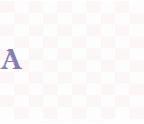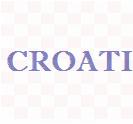Telecommunication economy: (Stage 4)
According to Research and Markets the BMI estimates that mobile subscriber growth will increase by 1% by the end of the forecast period. The report emphasized that innovation and growth will be reduced due to increased saturation of network providers. The Research and Markets report predicts that the number of mobile subscribers with 3G handsets is estimated to increase by 43.5% in 2011. This is equivalent to over 11.1% of the total mobile customer base which is a significant indicator of the regions technological capabilities. BMI maintains the view that 3G customer growth may have been larger if not for Croatia's economic recession and its lingering where consumers were looking to cut costs in high end mobile services. The future forecast for the mobile environment includes an increase in 3g and mobility usage on pace with the rest of Europe.
IT Economy: (Stage 4)
The BMI estimates that Croatia has spent nearly 1.1 billion dollars in 2012, up from 1 billion in 2011. The prospects for rapid IT growth in Croatia have correlated with their economic environment. The region has a diversified range of businesses across sectors in transportation, telecommunication, oil and gas, and insurance. The BMI also expects Croatia's IT mark to grow 6% in 2012 to account for a lack of spending from economic troubles in 2011. In the short term Croatia is still dealing with economic issues from the financial crisis in 2012, but the BMI is forecasting that IT spending per capita will increase from 2.42-3.11 billion dollars in 2016 with the regions merging with the European Union.
IT Competitive Market : (Stage 4)
According to the BMI, In 2011, SAP maintained the greatest market share in the Croatian business software market. The other competitors include Microsoft, IN2, Laus CC and Oracle. The Croatian IT services market is dispersed with the top 10 companies in the region accounting for about 60% of sector revenues and global vendors taking less than half. The leading IT companies within the region include Siemens, IBM, SIS, and King ICT.
IT Services: (Stage 4)
According to the BMI Croatia's IT services market are projected at 325 billion dollars in 2012 and are expected to be the fastest growing IT market segment over the forecast period. 60% of Croatia's IT spending is made up of telecommunication systems, banking, and government. Currently IT services account for less than 30% of all IT spending in Croatia's hardware-dominated market and the market is undeveloped. There are many things, however, driving an increase in spending as privatization, modernization, and competitive forces in many industry sectors are becoming the trend, and businesses are looking to improve and address the new changes in the marketplace.










